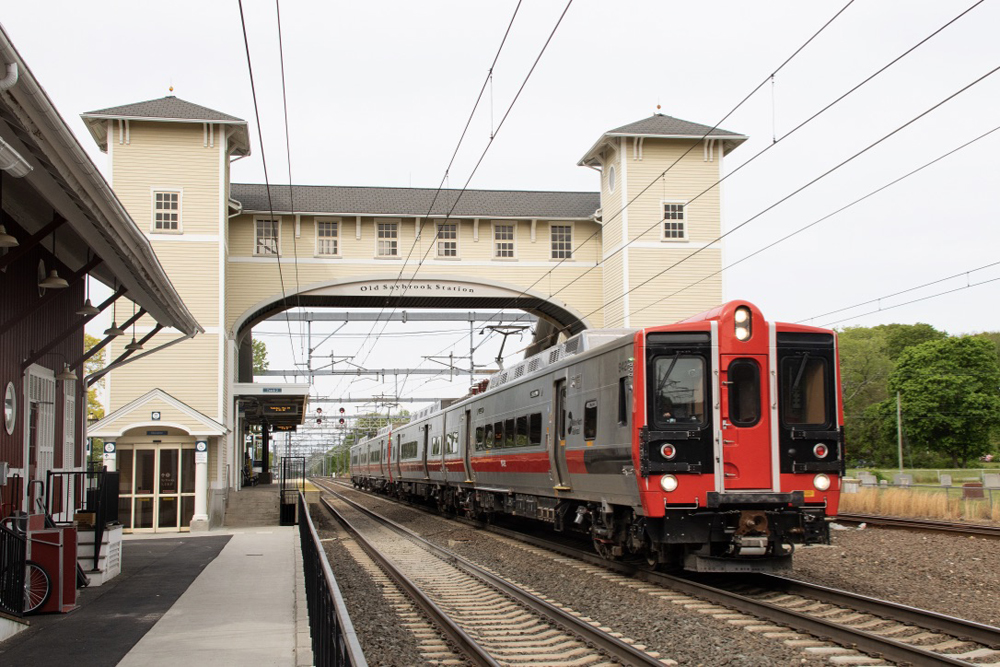
NEW HAVEN, Conn. — With little fanfare, the Connecticut Department of Transportation has turned its Shore Line East commuter service over to Kawasaki M8 electric multiple unit cars, replacing diesel-powered trains using former Virginia Rail Express Mafersa coaches.
The EMUs began to cover all trains today (Tuesday, May 24) on the service between New Haven and New London, Conn., under a new schedule with 11 westbound and 10 eastbound trains on weekdays. An additional pair of trains operates only as far east as Old Saybrook, with a bus connection to or from New London.
The state-owned EMU cars are the standard equipment on Metro-North’s New Haven Line between New Haven and Grand Central Terminal in New York City, operating in a mix with identical cars owned by New York’s Metropolitan Transportation Authority. This is the first time they have carried revenue passengers east of New Haven.
The equipment change was announced Monday afternoon, May 23, during a press event at New Haven Union Station. Connecticut Gov. Ned Lamont was joined by U.S. Sen. Richard Blumenthal, U.S. Rep. Rosa DeLauro, Connecticut Transportation Commissioner Joseph Giulietti, and officials from Amtrak and Metro-North. Following the ceremony, many of the dignitaries and some members of the press rode an inaugural M8 special train east to New London.
In a press release, Lamont’s office acknowledged that the EMUs “have long been awaited by Shore Line East customers and represent a substantial improvement over the older diesel-powered train sets,” and highlighted benefits of the change: “Electric trains emit no carbon emissions and include additional amenities for riders, such as electrical outlets at each seat, brighter interior spaces, updated restrooms, higher back seats, and improved luggage racks.”
Although the M8s are not new, they are two decades younger than the former VRE coaches and mean Shore Line East passengers will be riding in the same equipment as commuters in the western half of the state. The M8s will run in four-car sets on their new assignment.
CDOT established Shore Line East in 1990, initially running 33 miles between New Haven and Old Saybrook. Service later was extended 17 miles to New London. Since its inception, Amtrak has operated the service, using its own Northeast Corridor crews. Some trains also had their western terminus shifted to Stamford for several years, using Metro-North crews between New Haven and Stamford.
Shore Line East has relied on a remarkable variety of diesel push-pull equipment. CDOT first purchased two former Southern Pacific F7s and 10 onetime Chesapeake & Ohio coaches used on the short-lived PATrain commuter service out of Pittsburgh. In addition, the agency acquired two Maine Central GP38s and a single GP7 from Guilford Transportation Industries, and in the mid-Nineties bought six rebuilt GP40-2Hs. All 11 units were repainted in the New Haven Railroad’s “McGinnis” red, white, and black color scheme. In 2005, CDOT acquired eight GE Amtrak P40s, which retained Amtrak’s blue-and-platinum-mist scheme until recently. Later passenger cars included new Bombardier “Shoreliner” coaches, depowered Budd SPV2000 cars, and the Brazil-built Mafersa coaches bought from Virginia Rail Express.
Installation of 25-kilovolt catenary on the Northeast Corridor over the 157 miles between New Haven and Boston was completed in 1999, making all Amtrak trains electrically powered. Connecticut and New York received the first of an eventual 471 M8 EMUs for New Haven-New York City service beginning in 2011, and the idea of assigning some of these new cars to Shore Line East surfaced quite early. But Metro-North’s continued ridership growth repeatedly postponed those plans. Other obstacles to running the M8s east of New Haven included non-electrified tracks used by Shore Line East trains, interlocking modifications, and concerns over certain station platforms. All of these were addressed in the past two years.
Although the official notice of the Shore Line East equipment change did not come until Monday, train-watchers and SLE passengers were given plenty of hints of the transition over the past several weeks, as Amtrak crews made multiple familiarization runs with the M8 cars between New Haven and New London.
Connecticut DOT’s newest rail operation, the CTrail Hartford Line service over Amtrak’s 62-mile New Haven-Springfield, Mass. route, was inaugurated in 2018 and has relied on locomotives from the Shore Line East fleet. In the past four years, all six GP40-2Hs and several P40s have been rebuilt and repainted in CDOT’s new CTrail image, still using the heritage red, black, and white colors. The equipment previously assigned to Shore Line East will now be used on the Hartford Line, which already has 16 leased Massachusetts Bay Transportation MBB coaches.
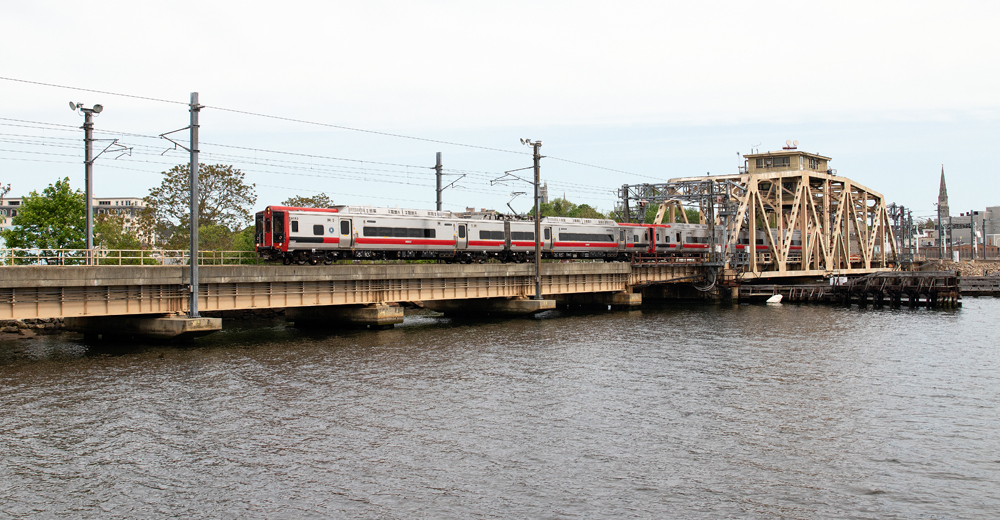






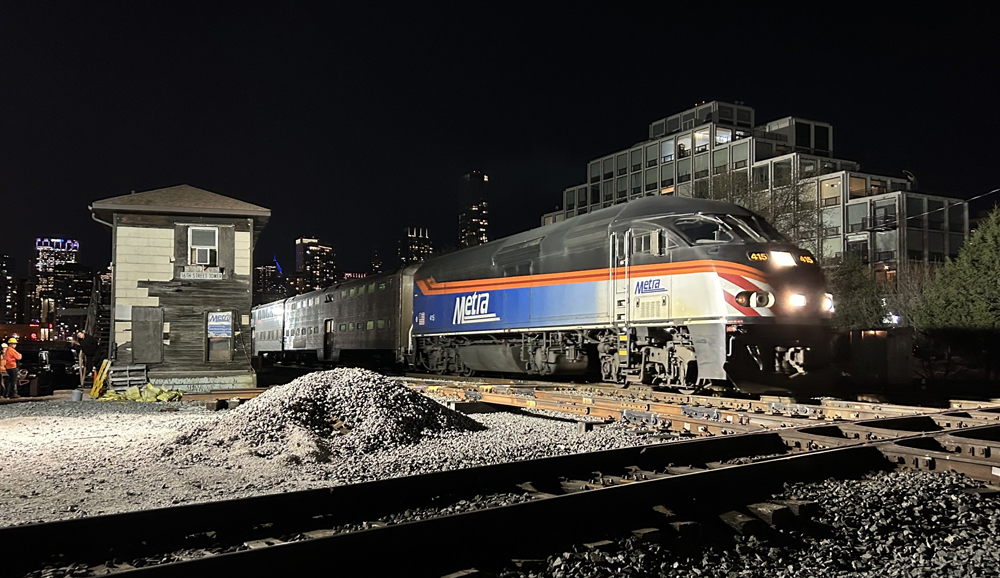
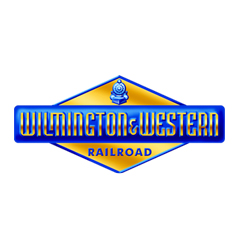
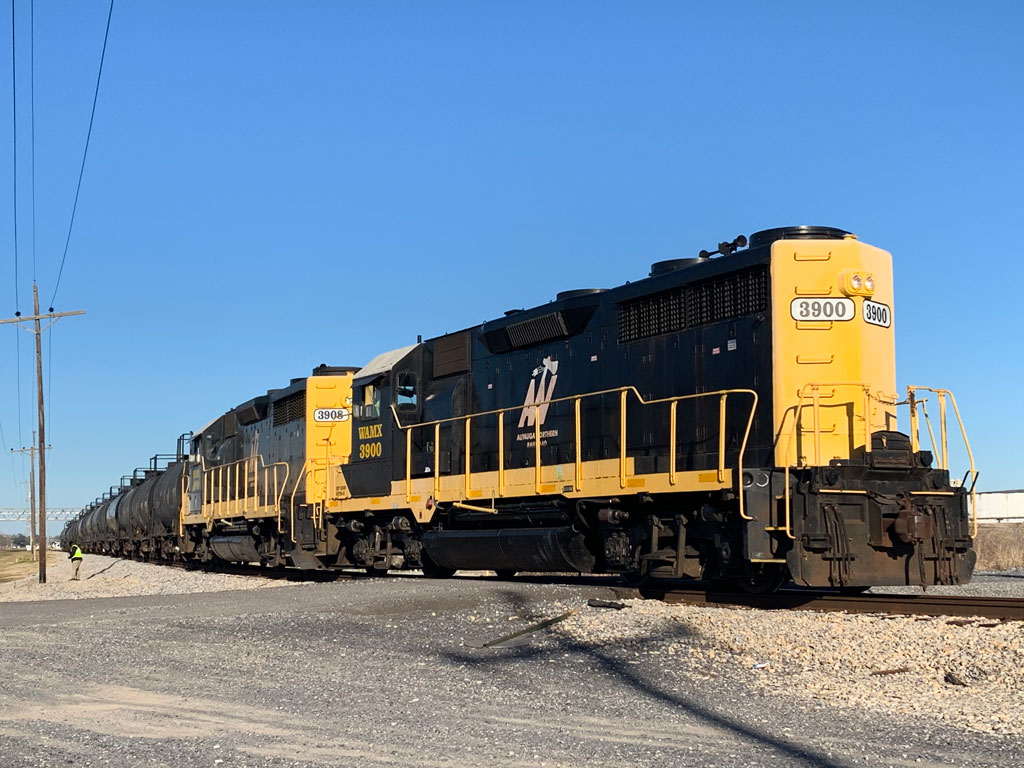





It took them long enough to make the change. After the line was electrified to Boston it made sense to discontinue using diesel powered trains. It makes the trains even more environment friendly as well as most likely lowering operating costs for the line. With the cost of diesel fuel continuing to rise using electric powered trains even more economical to operate.
As a traction fan, I have been waiting for this transition since the electrification. Very cool.
Next step: string catenary to Springfield.
The publicity about this change was terrible and a real lost opportunity. It’s been years in the making, and all the railfans knew about qualification runs, etc. But the general public will be unaware unless they watch local news and read the local paper.
How many riders will even notice the difference?
I think many. I live in Arnhem in the Netherlands. We have mostly electric MUs but on a more rural line still diesel MUs. The difference in ride quality, smoothness, noise is substantial, even with the most modern diesel MUs.